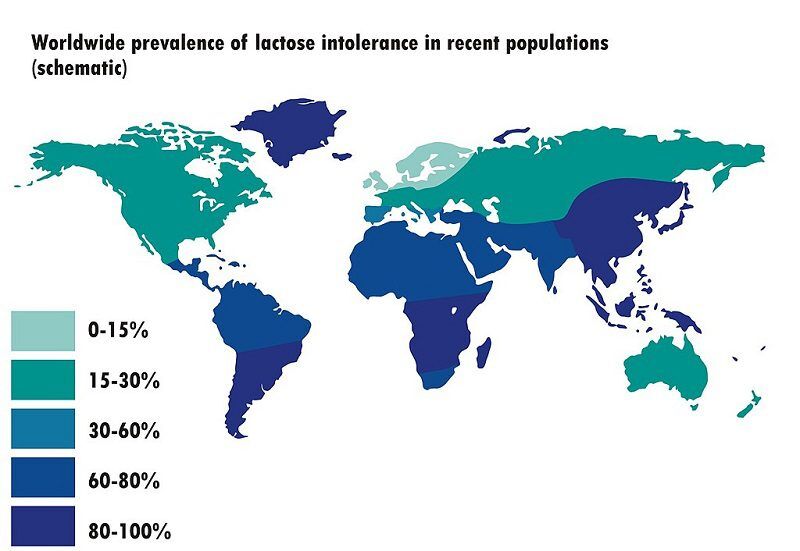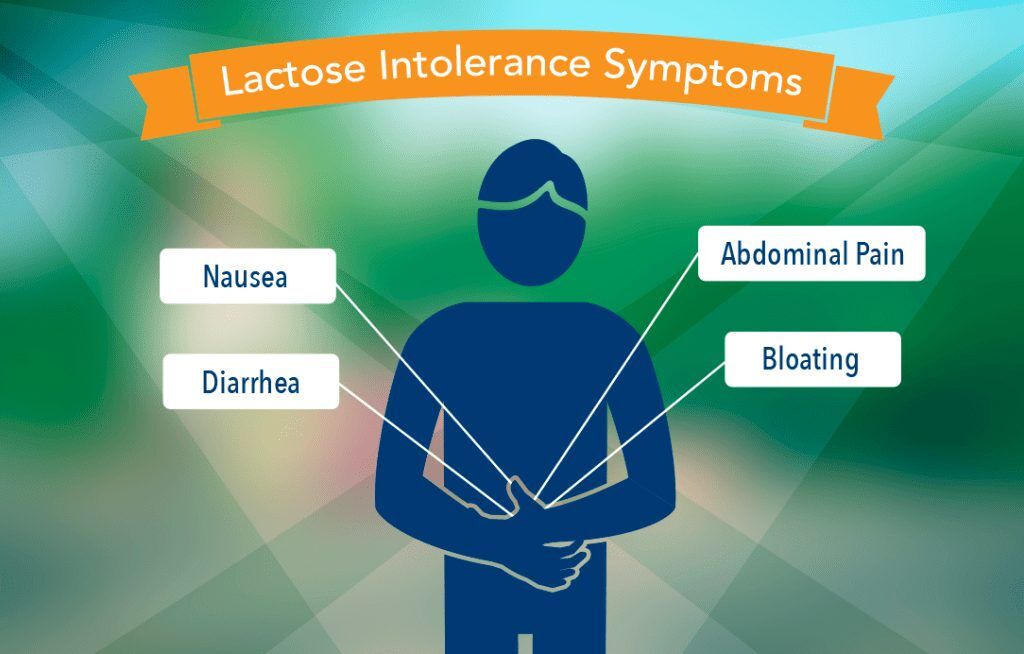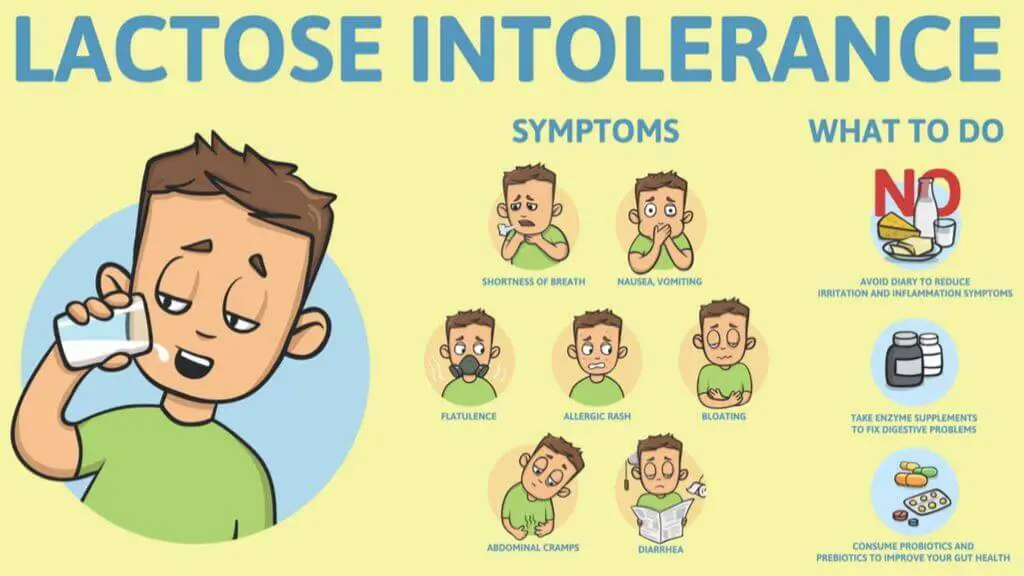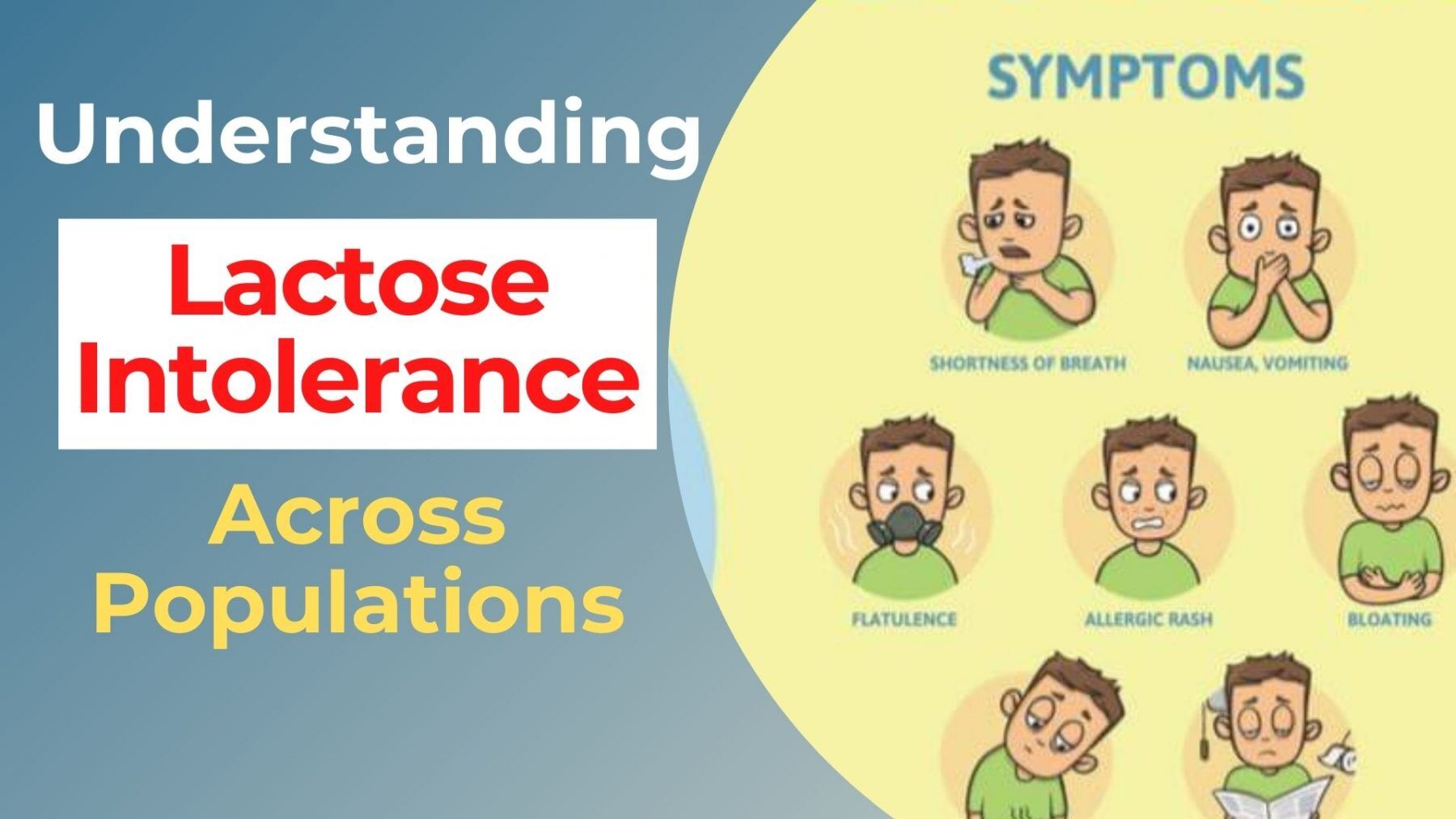Lactose intolerance is a condition where lactose, the sugar found in dairy products, cannot be digested properly.
If you’re lactose intolerant and drink a big glass of milk, chances are you’ll be farting loudly in the bathroom stall pretty soon!
It’s common to see lactose intolerance among people with Asian heritage , but why? What causes this intolerance? Why do we see this phenomenon more in Asia and less in the West?
And most importantly, what can you practically do about being lactose intolerant?
What do you do if you’re lactose intolerant?
Perhaps you can avoid all forms of lactose. But lactose is found in many products including milk.
Thinking that you’ll never have lactose again can feel restrictive and limiting.
Fortunately, after we discuss cultural differences, we’ll give you practical ideas to implement if you’re struggling with lactose.
Let’s dive in!
What Is Lactose Intolerance and How Does It Affect Asians and Africans?

Lactose intolerance can be defined as the inability of your body to break down lactose into simpler sugars like glucose.
Intermountain HealthCare notes an interesting statistic:
- 75-95% of the African and Asian populations are lactose intolerant
- 18-26% of Northern European populations are lactose intolerant
So Lactose intolerance is a common phenomenon in Asia and Africa.
You can find the lactase persistence gene in Northern European descent and their offspring. This is the gene that makes people immune to lactose intolerance!
Let’s define three terms real quickly before going further:
- Lactase Persistence: when you have the genes that allow your body to digest lactose.
- Lactose Intolerance: when you do not have the genes that allow your body to digest lactose.
- Lactase: Enzyme that helps digest lactose (found in dairy milk, human milk, etc.). The cells that line the small intestine naturally produce lactose.
But Why?
The lactase persistence gene is not present in Asians or African populations because historically they never consumed animal meat or milk.
In contrast, Westerners got exposure to dairy animals a long time ago. They had evolved lactase persistence genes that allow them to digest dairy products without any symptoms of lactose intolerance.
If you rewind the clock 5,000 years ago and took a snapshot of your typical northern European lifestyle versus an Asian lifestyle you’d see:
- Northern European: Cows and other dairy producing animals like goats live in close proximity to the nuclear human family. Humans take care of cattle, herd them, milk them, and ultimately eat them. Cows are used to plough fields, etc.
- Asian: Dairy animals are nowhere to be found. In many areas humans toil not on farms but on rice fields growing rice. Now I’ve been to Thailand and have seen goats there, but back then thousands of years ago there weren’t. Basically, the dairy animals in Asia today were imported relatively recently.
What Happens When You Lack Ability to Digest Lactose?

Lactose intolerance symptoms are pretty easy to spot.
If you’re lactose intolerant, after consuming dairy products your body will try its best to digest lactose but unfortunately it doesn’t have the lactase enzymes to break down lactose into glucose and galactose.
In that case, undigested lactose travels into your colon and down those bacterial flora that also produce lactase.
Whether it’s your body itself or the bacteria in it – same thing! Without enough lactase activity in your digestive system, lactose will continue to move through you unbroken until it reaches your large intestine, where bacteria start munching away at the lactose sugars because they can digest them.
The fermentation process in these bacteria gives off hydrogen gas as a byproduct which then makes its way out of your body as flatulence (yes, those smelly farts I talked about earlier!).
It’s not just flatulence though; people who suffer from lactase deficiency also experience:
- abdominal pain
- nausea
- diarrhea
How Can I Avoid Symptoms of Being Lactose Intolerant When Eating Dairy Products?

The lactase persistence gene is just one of many human genes that have evolved in response to our environment.
It’s an oversimplification to think lactose intolerance is easily fixed by a pill. But there are options available for lactose intolerant individuals who simply must consume dairy products!
Lactose intolerant individuals who simply must eat dairy products can take Lactaid pills, which contain lactase enzymes, so they don’t get sick from consuming milk and other dairy products!
Lactaid pills do not require a prescription in the United States but it’s always best to consult your doctor before you start taking medication, especially since there could be possible side effects or drug interactions between medications/supplements you’re already taking!
At the Eating Disorder Center where I currently work, I see lots of clients come in with various allergies and food preferences.
Fortunately with lactose intolerance, I usually breathe a big sigh of relief. Why? Because I know that Lactose Intolerance pills are effective.
I know that by taking a few pills before they consume a meal with dairy that their usual digestive symptoms like gas will not happen!
The hard part is actually remembering to take the Lactaid Pills before eating. Oftentimes even though people ‘know’ they can’t handle lactose, they’ll still forget and have a meal ith milk or other dairy products.
Whoopsie!
One way to discover if you suffer from lactose malabsorption and your body truly cannot digest milk is to take a breath test. For example, hydrogen breath test kits are out on the market – you can quickly just breathe into them and the readings will tell you if you are lactose intolerant.
But what if you want some lactose alternatives? Let’s talk about those real quickly, too!
Lactose-Free Alternatives

These days there are many alternatives to lactose. For lactose intolerant people, some are great lactose-free alternatives to dairy products!
For example, Silk makes soy milk with lactase enzymes. Then lactose intolerant individuals can digest it! There is also a brand of almond milk made on the west coast called Almond Breeze which has added lactase enzymes as well.
Even though these alternative milks might not taste exactly like cow’s milk, they’re still delicious in their own way and provide lots of calcium for growing bones especially when fortified (I’m looking at you, chocolate flavored Silk Milk – delish!)
Here is a list of lactose free alternatives!
- Soy milk
- Rice milk
- Almond Milk Coconut milk (though this one is not lactose-free it does contain less lactose and can be tolerated by some lactose intolerant individuals)
- Hemp Milk (I haven’t tried hemp milk before but I’ve heard good things about its creamy consistency – just make sure to buy the kind that’s fortified with calcium, vitamin D and/or other vitamins because plain hemp milk doesn’t contain these nutrients.)
There are even lactose free cheeses, yogurts, and coffee creamers too!
Final Thoughts on the Lactose Intolerance Asian Phenomenon
The lactose intolerance phenomenon is another example of the extreme variance across the world in terms of cultural practices, genetics and disease prevalence.
It’s important to consider lactose tolerance as one more factor that has contributed to differences between human societies over time.
We are all unique individuals but we also share traits with others based on our geographical location, which can influence everything from how food tastes (we know you’ve wondered about this!) to what diseases affect us!
Certain populations have evolved different ways of processing lactase due to their environment where their ancestors lived.
It’s fascinating when you really think about it because without a deeper understanding into mother nature or evolution, then these variations on how people digest milk would seem like a random occurrence rather than purposeful.
These adaptations were not random, but instead were highly functional.
This lactase adaptation is one of the many examples that highlight how humans are actually quite incredible beings!
What do you think? Leave a comment below!
Now if you want to learn why you’re craving milk, check out this article here.


